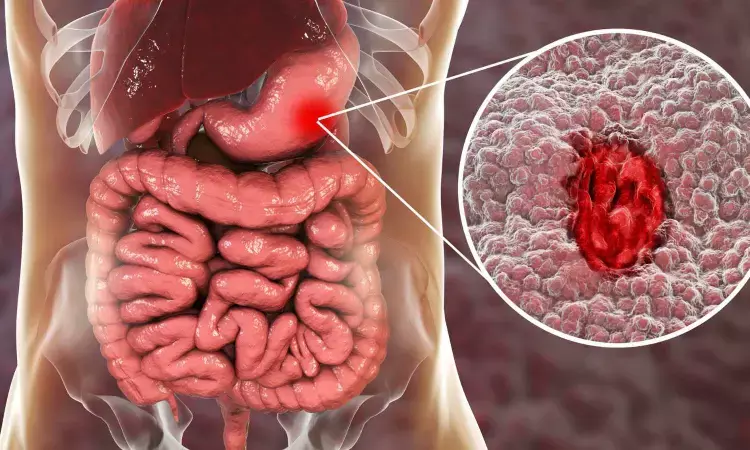- Home
- Medical news & Guidelines
- Anesthesiology
- Cardiology and CTVS
- Critical Care
- Dentistry
- Dermatology
- Diabetes and Endocrinology
- ENT
- Gastroenterology
- Medicine
- Nephrology
- Neurology
- Obstretics-Gynaecology
- Oncology
- Ophthalmology
- Orthopaedics
- Pediatrics-Neonatology
- Psychiatry
- Pulmonology
- Radiology
- Surgery
- Urology
- Laboratory Medicine
- Diet
- Nursing
- Paramedical
- Physiotherapy
- Health news
- Fact Check
- Bone Health Fact Check
- Brain Health Fact Check
- Cancer Related Fact Check
- Child Care Fact Check
- Dental and oral health fact check
- Diabetes and metabolic health fact check
- Diet and Nutrition Fact Check
- Eye and ENT Care Fact Check
- Fitness fact check
- Gut health fact check
- Heart health fact check
- Kidney health fact check
- Medical education fact check
- Men's health fact check
- Respiratory fact check
- Skin and hair care fact check
- Vaccine and Immunization fact check
- Women's health fact check
- AYUSH
- State News
- Andaman and Nicobar Islands
- Andhra Pradesh
- Arunachal Pradesh
- Assam
- Bihar
- Chandigarh
- Chattisgarh
- Dadra and Nagar Haveli
- Daman and Diu
- Delhi
- Goa
- Gujarat
- Haryana
- Himachal Pradesh
- Jammu & Kashmir
- Jharkhand
- Karnataka
- Kerala
- Ladakh
- Lakshadweep
- Madhya Pradesh
- Maharashtra
- Manipur
- Meghalaya
- Mizoram
- Nagaland
- Odisha
- Puducherry
- Punjab
- Rajasthan
- Sikkim
- Tamil Nadu
- Telangana
- Tripura
- Uttar Pradesh
- Uttrakhand
- West Bengal
- Medical Education
- Industry
Erythromycin use prior to endoscopy improves gastric mucosa visualisation

In a new study by Diego Adao and team it was found that when erythromycin used prior to endoscopy may enhance the ability to see the gastrointestinal mucosa and reduce the need for blood transfusions slightly. The findings were published in Cochrane Database of Systematic Reviews.
The only effective treatment for upper gastrointestinal hemorrhage is an upper GI endoscopy (UGIH). Nonetheless, the gastric mucosa may only be partially visible at presentation in up to 13% of patients who have an upper endoscopy. Erythromycin accelerates stomach emptying by acting as a motilin receptor agonist in the upper GI tract, which may result in higher visual clarity and more therapeutic efficacy. The benefits and risks of erythromycin in UGIH are not clear, nevertheless. In order to assess the advantages and disadvantages of erythromycin before endoscopy in people with acute upper gastrointestinal haemorrhage to any other medication, no treatment, or a placebo, this study was carried out.
For this investigation, traditional, thorough Cochrane search techniques were employed. The most recent search was done on October 15, 2021. Erythromycin before endoscopy was compared to any other medication, no treatment, or a placebo before endoscopy in adults with acute UGIH in the included randomised controlled trials (RCTs). The UGIH-related mortality and serious adverse events were the major outcomes, were all-cause mortality, stomach mucosa visualisation, rebleeding, non-serious adverse events, blood transfusion, and rescue invasive intervention were the secondary endpoints. To rate the degree of certainty in the evidence supporting each conclusion, GRADE criteria were utilised.
The key findings of the study were:
1. No fatalities were associated with UGIH. The short-term effects of erythromycin relative to placebo on major adverse events, all-cause mortality, non-serious adverse events, and rebleeding are not well supported by the available evidence.
2. There were no fatalities or severe adverse events connected to UGIH. The comparison between the short-term effects of erythromycin plus nasogastric tube lavage and placebo plus nasogastric tube lavage on all-cause mortality, visualising the gastric mucosa non-serious side events, rebleeding, and blood transfusion is highly questionable.
3. In one RCT, 30 individuals were used to compare metoclopramide and nasogastric tube lavage to erythromycin and nasogastric tube lavage. The effects of erythromycin combined with nasogastric tube lavage on all of the stated outcomes are not well supported by the available evidence.
Source:
Adão, D., Gois, A. F., Pacheco, R. L., Pimentel, C. F., & Riera, R. (2023). Erythromycin prior to endoscopy for acute upper gastrointestinal haemorrhage. In Cochrane Database of Systematic Reviews (Vol. 2023, Issue 2). Wiley. https://doi.org/10.1002/14651858.cd013176.pub2
Neuroscience Masters graduate
Jacinthlyn Sylvia, a Neuroscience Master's graduate from Chennai has worked extensively in deciphering the neurobiology of cognition and motor control in aging. She also has spread-out exposure to Neurosurgery from her Bachelor’s. She is currently involved in active Neuro-Oncology research. She is an upcoming neuroscientist with a fiery passion for writing. Her news cover at Medical Dialogues feature recent discoveries and updates from the healthcare and biomedical research fields. She can be reached at editorial@medicaldialogues.in
Dr Kamal Kant Kohli-MBBS, DTCD- a chest specialist with more than 30 years of practice and a flair for writing clinical articles, Dr Kamal Kant Kohli joined Medical Dialogues as a Chief Editor of Medical News. Besides writing articles, as an editor, he proofreads and verifies all the medical content published on Medical Dialogues including those coming from journals, studies,medical conferences,guidelines etc. Email: drkohli@medicaldialogues.in. Contact no. 011-43720751


